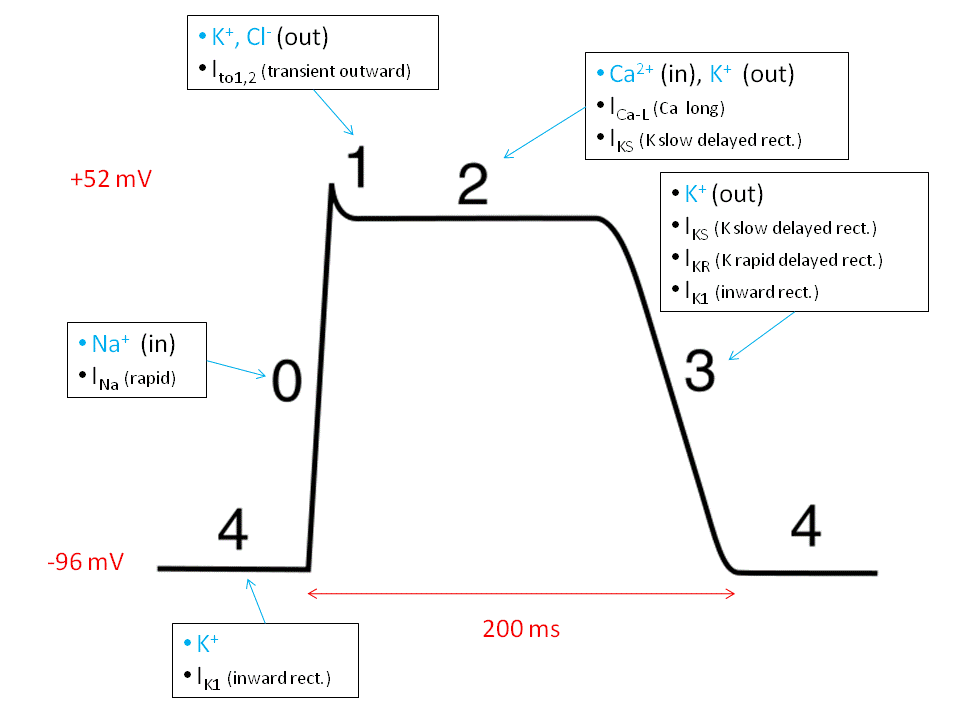Why does the cell membrane become depolarized ,when a sodium channel opens and sodium rushes into a myocyte (heart cell)?
1 Answer
Atrial myocytes show examples of non-pacemaker action potentials in the heart.
These work very in a very similar way as nerve impulses do. The membrane of an unstimulated myocyte is polarized as there is a difference in electrical charge between the outside and inside of the membrane.
The inside is negative with respect to the outside.
Polarization is established by maintaining an excess of sodium ions (Na +) on the outside and an excess of potassium ions (K +) on the inside.
Other ions, such as large, negatively charged proteins and nucleic acids are inside the cell. These contribute to the overall negative charge on the inside of the cell membrane as compared to the outside.
When sodium ions (+) rush in to the cell, they balance the net negative charge inside, causing the cell to become depolarized.
However, because of the large increase in slow inward Ca++ occurring at the same time, repolarization is delayed and there is a plateau phase in the action potential.
This inward calcium movement is through long-lasting (L-type) calcium channels.
This plateau phase prolongs the action potential duration and distinguishes cardiac action potentials from the much shorter action potentials found in nerves and skeletal muscle.

Use of calcium channel blockers and potassium channel blockers are used to reduce high blood pressure.


